Every building has a history within its walls. And sometimes, working on your home can lead to surprising discoveries... good and bad! Identifying problems quickly is the key to preventing extensive damage in the future, and a remodel is the perfect time for making repairs. While you are focused on finding that ideal kitchen cabinet or granite countertop, let the professionals deal with what might be under those cabinets and inside the walls!
Whether you’re revamping elements or gutting an entire room, here’s a checklist of things to look for during your next remodel.
Hidden Mold
Talk about a nasty surprise - mold may be the most significant issue to look out for when tackling your next remodel. Mold can develop anywhere it has a moisture and food source, meaning it often forms in hidden spaces behind walls and ceilings.
It can be challenging to tell if you have hidden mold. So here are some sure signs:
Evidence of water intrusion
Stale and musty odors
Condensation and persistent moisture
Water build-up and stains
Spotting and “fur” on your walls
Mold allergies - coughing, sneezing, sinus headaches
When mold is discovered, it is essential to have the infestation removed by a qualified mold removal specialist.
Can mold be prevented?
A little elbow grease now could save you money in the long run. Rather than taking action after mold becomes a problem, there are steps take steps to prevent mold from growing in the first place:
Keep things dry - dry off damp surfaces within 24 hours
Invest in a dehumidifier
Remodel your house using mold-resistant materials!
Load Bearing Beams
Moving, removing or replacing load-bearing beams can be extremely costly, and doing so carelessly can lead to severe damage. A structural engineer will need to evaluate the space and provide a structural plan for the contractor and the building permit. Having a professional contractor do your remodeling is the safest way to avoid structural damage from removing the wrong beam and be sure the project is completed per engineering specifications.
Rerouting Wires or Pipes
Like removing load-bearing walls, rerouting wires and pipes is advanced work that is recommended leaving to the professionals. This type of activity requires a permit by the building department to be performed by a licensed electrician or licensed plumber. A professional remodeling contractor will be sure this service is included in the scope of work.
Old Wiring
Old wiring is a hidden danger that most of us know nothing about. Outdated wires can pose a fire hazard as many cannot handle the electrical load of modern appliances. Additionally, your local building department will require old wiring to be updated to current building codes by a licensed professional.
Some signs that it may be time to replace your wiring:
Your home is over 30 years old
You’re tripping the breaker
Your lights flicker or dim when you turn on appliances
H.V.A.C.
H.V.A.C. stands for Heating, Ventilation and Air Conditioning - used to condition the air within the home. A renovation or remodel can damage components of the system, necessitating a change in your appliances and infrastructure.
A few ways your remodel can impact your HVAC:
Dust can compromise the system
Additional square footage might exceed your AC’s capacity
The configuration of your vents may not suit the new layout of your home
A remodel will make your house feel new again, but don’t neglect the functions of your home! Before beginning any work, a review of your HVAC system is important to avoid issues that could damage your system and lead to excessive energy bills. Dust is inevitable in a home project, but the contractor should provide dust barriers to reduce the amount of dust flowing through your house and HVAC system. It is always recommended getting your HVAC system serviced once the project is completed.
Rodents & Pests
Few rank higher than critters on the list when it comes to unwelcome surprises. Yes, unfortunately, discovering new roommates is a possibility when approaching a remodel, particularly when removing walls. Rodents enter a home through just about any opening, and construction projects may reveal such infestation. You will want to have a professional pest control service mitigate these issues and possibly coordinate resolutions with your contractor.
What measures can be taken to keep rodents away?
Close up any gaps or holes around baseboards with steel wool and caulk
Seal all piping areas - beneath sinks, behind the refrigerator and dishwasher, etc.
Seal all openings outside of the building, like holes and hatches
Before you install a run of new counters and cupboards, be sure the walls behind are solid and the ends of the built-in are sealed to avoid creating unblock-able entries for rodents
Make sure no food is left out
No matter what may lurk behind your walls, we’re here to help you renew your home!
Maverick Home Remodeling, Inc. has served the southwest Denver metro area for almost twenty years, assisting homeowners in renewing their kitchens, bathrooms, basements and more.
Contact us to begin your Pre-Construction Services today!

